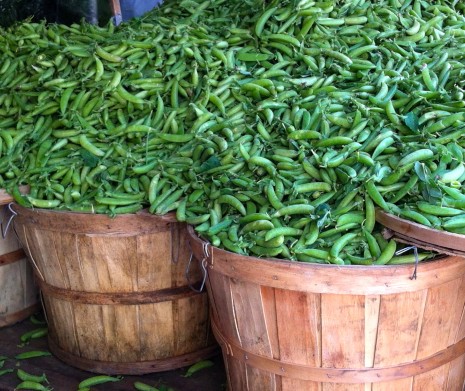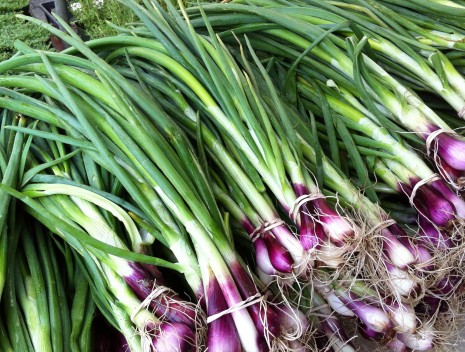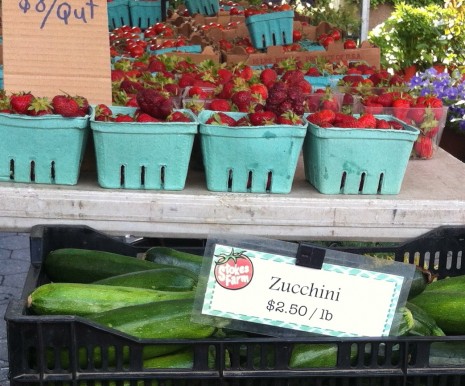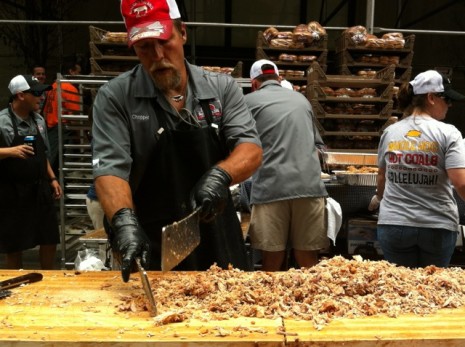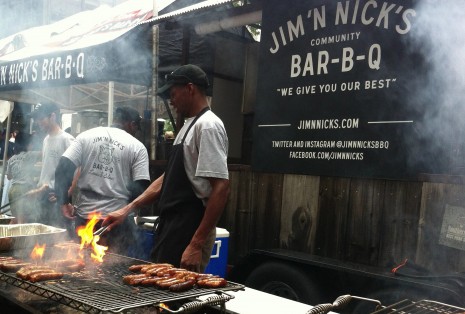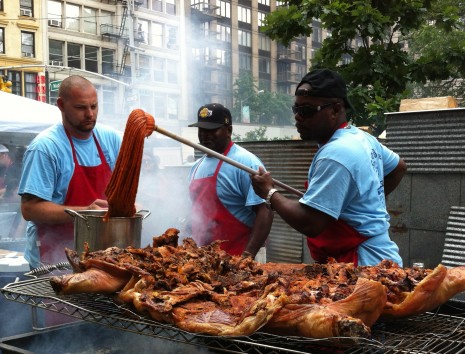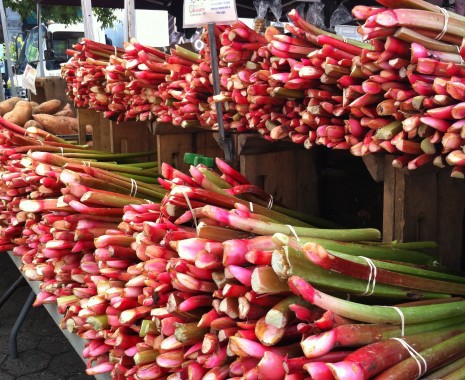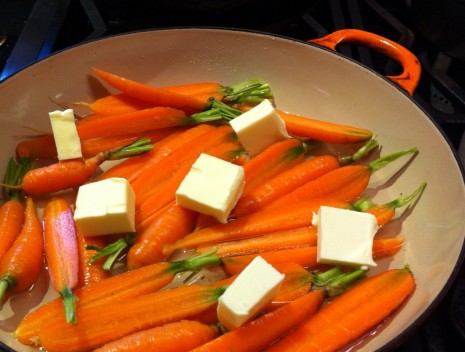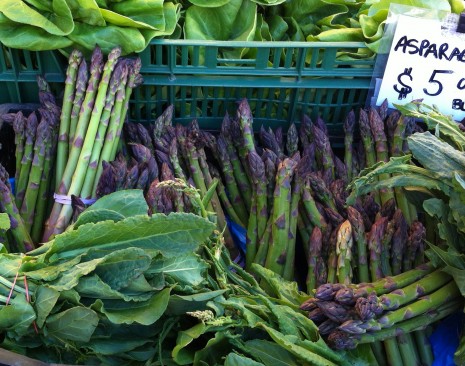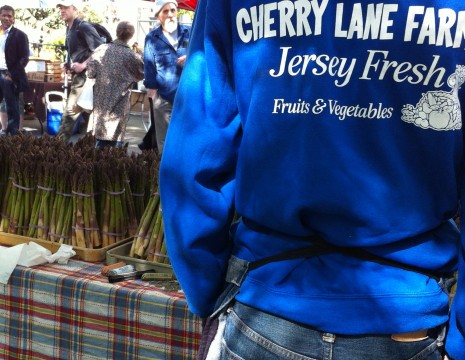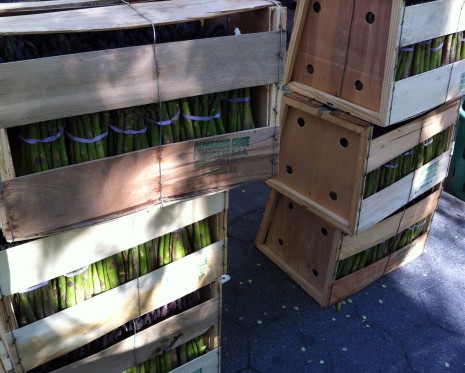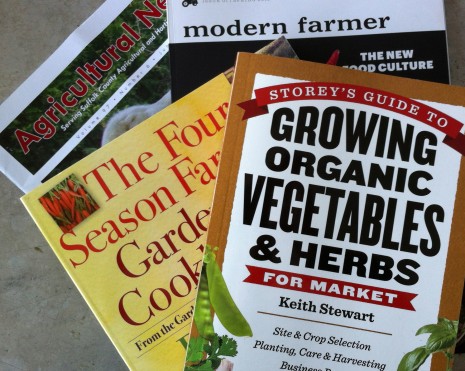
Good cookbooks are soothing and aspirational all at once. They fall squarely in the “I can dream can’t I?” department, which must be why many people like to read them before they go to bed. I used to be one of them.
A few years ago, though, I branched out with an evocative, beautifully illustrated history of English kitchen gardening that I’d picked up at a library book sale. Before long, I found myself absorbed in Agricultural News, published by the Cornell University Cooperative Extension of Suffolk County. My husband, Sam, is a pastry chef turned horticulturalist who works out on Long Island, and I thought it would be nice if I had a handle on late blight, root rot, downy mildew, and the monthly “Weed of Interest” (for June, it’s the promiscuous yellow nutsedge, which can produce almost 7,000 offspring from a single plant in a single season). And I like learning, for instance, that there is such a thing as the Long Island Cauliflower Association, and that plants seldom damaged by deer include spicebush, sea buckthorn, and a tree called the Carolina silverbell, which is as pretty as it sounds.
This spring, I read my way through the inaugural issue of Modern Farmer, an elegant, ambitious print quarterly that is lightyears removed from trade publications, let alone The Modern Farmer, a 1960s television show that appeared at dawn on Saturday mornings. I was always up with the birds, too, and found the livestock reports far more interesting than my weekly visit with Mr. Green Jeans, on Captain Kangaroo an hour or so later.
Today’s Modern Farmer is published in Hudson, New York, by a sophisticated crew headed by founder and editor in chief Ann Marie Gardner, former editor at T: Travel The New York Times Magazine and founding editor of Monocle. I was relieved to find not yet another hyper-local magazine devoted to celebrating worthy producers or Brooklyn hipsters who think they’ve invented beekeeping, but a point of view that’s broad without being watered down.
I fit neatly into the mag’s target audience, but more importantly, it makes me realize just how far the food world has come since 1999, when I attended the first Joe Baum forum on Sustainable Cuisine, hosted by the Culinary Institute of America in Hyde Park. I was there with two colleagues from Gourmet, and we represented the only food magazine at the conference. The next year, what came to be our annual produce issue hit the newsstand, opening the door for definitive stories on slave labor in Florida tomato fields, the struggles of American shrimpers, industrial chicken slaughter, the inhumane treatment of Kobe beef cattle, and the push-me-pull-you politics of scientific research. Here’s hoping Modern Farmer will up the ante.
A must-read for anyone who cultivates a farm fantasy or simply wants to grow stuff sustainably is Storey’s Guide to Growing Organic Vegetables & Herbs for Market, by Keith Stewart, a certified-organic farmer in the Hudson Valley whose first book, It’s a Long Road to a Tomato, chronicled his escape from a stifling city job to a rural, far more productive life. Keith’s rocambole garlic, lettuces, tomatoes, potatoes, squashes, pot greens, and celery roots are reason alone to frequent the Union Square Greenmarket, and I have a clearer idea of why his vegetables are so stellar after reading the Storey’s Guide. At 500-plus pages, it covers everything from how to buy good land and map fields to overall business smarts and a chapter called “Looking After Number One,” a frank discussion of how to keep physically, mentally, and emotionally healthy.
The insights into the time and labor involved are worth sharing with anyone who questions the expense of quality produce. In Chapter 13,”Our Most Profitable Crops,” Keith described why and how he grows peas with edible pods. “We grow sugar snap and snow peas because they come in early when there’s not much else around. They taste good, fetch a good price, and fix atmospheric nitrogen, but their season is relatively short, and they require a fair bit of work in terms of trellising and picking.”
Yep. “We’ve used a few different trellis products on the market,” Keith wrote. “All of them require that stakes be set firmly in the ground every 6 feet of so. Some peas can grow to a height of 6 feet or more and become quite heavy; they need substantial support. The trellises and stakes are costly, and this is one of the reasons we seldom grow more than 1,000 row feet of peas a year. Once the plants stop producing, we must dismantle the trellis system and remove the vines.” I felt tired just thinking about all the effort implicit in that last, laconic sentence, and that night I fell asleep figuring out just how many stakes it would take to plant 1,000 row feet of needy peas.
Taking care of plants so that they will take care of us is also the message in The Four Season Farm Gardener’s Cookbook, by Barbara Damrosch and Eliot Coleman, whose Four Season Farm, in Harborside, Maine, is an enduring example of small-scale, sustainable market gardening practiced year round. The book, which is full of photos of the couple’s home garden, is divided into two sections—a nicely detailed, easy-to-follow guide for plots big and small and a collection of 120 simple, appealing recipes. Field observations and nuggets of kitchen wisdom scattered throughout allow a relaxed, natural progression from growing what you eat to cooking what you grow.
Yesterday evening, when it was still hotter than all-get-out, the hednote for Barbara’s green gazpacho caught my eye. “It’s ideal for the early part of summer, when you crave a cold vegetable soup, but neither the tomatoes nor the peppers have ripened to red yet. Serve it with a platter of sandwiches ….”
Just reading the list of ingredients—green bell pepper, jalapeño, cucumber, celery, scallions, parsley, cilantro, lime—made me feel cooler, and Keith’s spring onions proved an able stand-in for the scallions. By the time I’d whizzed up the soup in the blender, Sam had pulled leftover roast chicken out the fridge and put together sandwiches with Duke’s mayo and plenty of salt and pepper. After supper, Sam dug through his tote bag. “I almost forgot I brought you a present,” he said. “A back issue of something called Acres U.S.A. Ever hear of it?”






